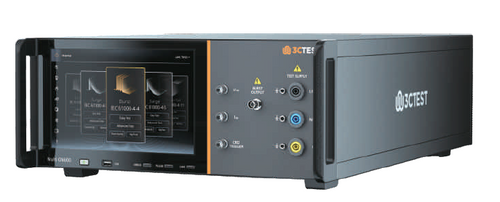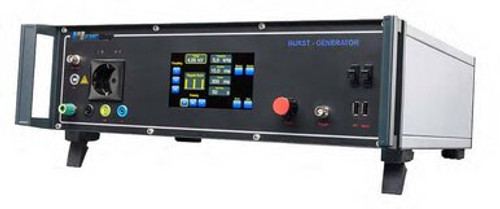The EMC Shop stocks EFT/Burst generators for compliance and pre-compliance testing. Rent or buy stand alone electrical fast transient EFT/Burst generators or try a multifunction generator to add Surge, Power Fail and other electrical disturbance tests.
Electrical Fast Transient (EFT)/Burst generators are required for conducted immunity testing standards, such as IEC/EN 61000-4-4. Electrical Fast Transient EFT/Burst events are small electrical surges caused by a local source, typically an electrical switch, it can occur within a product itself as well as from the data or power lines in the facility.












